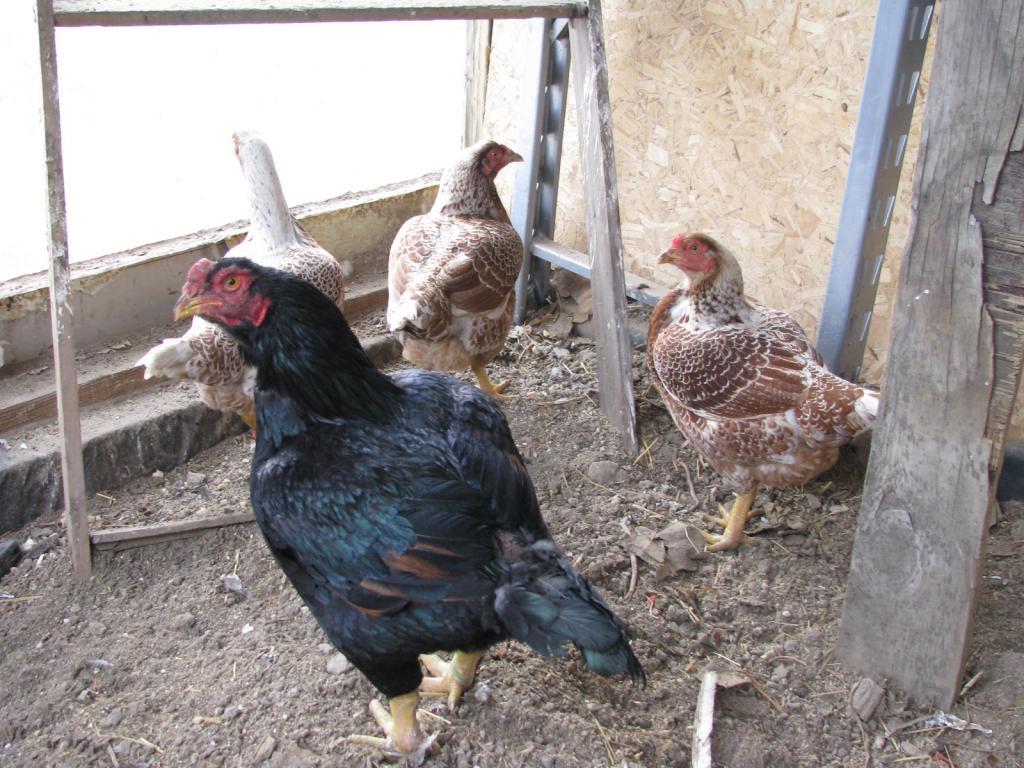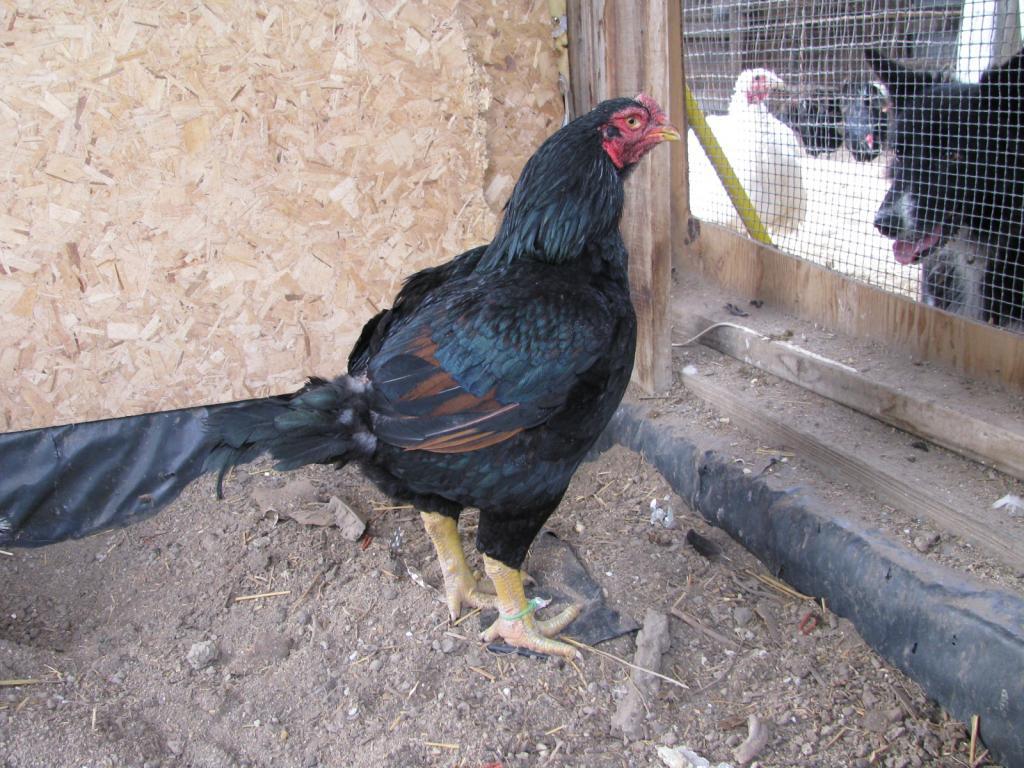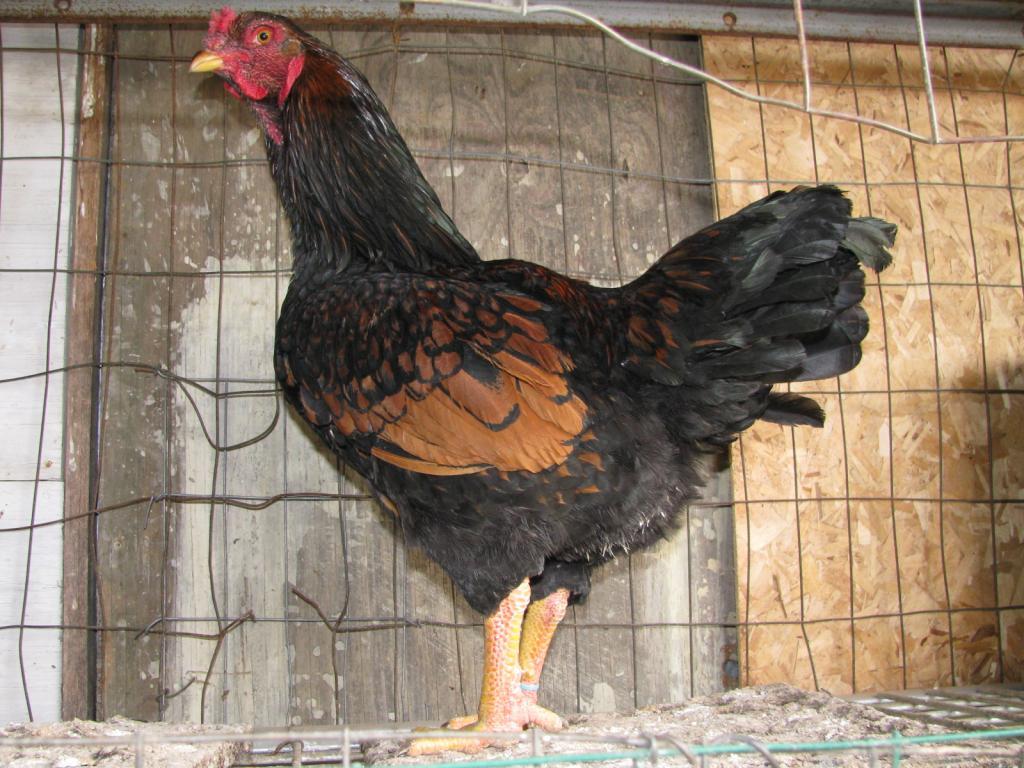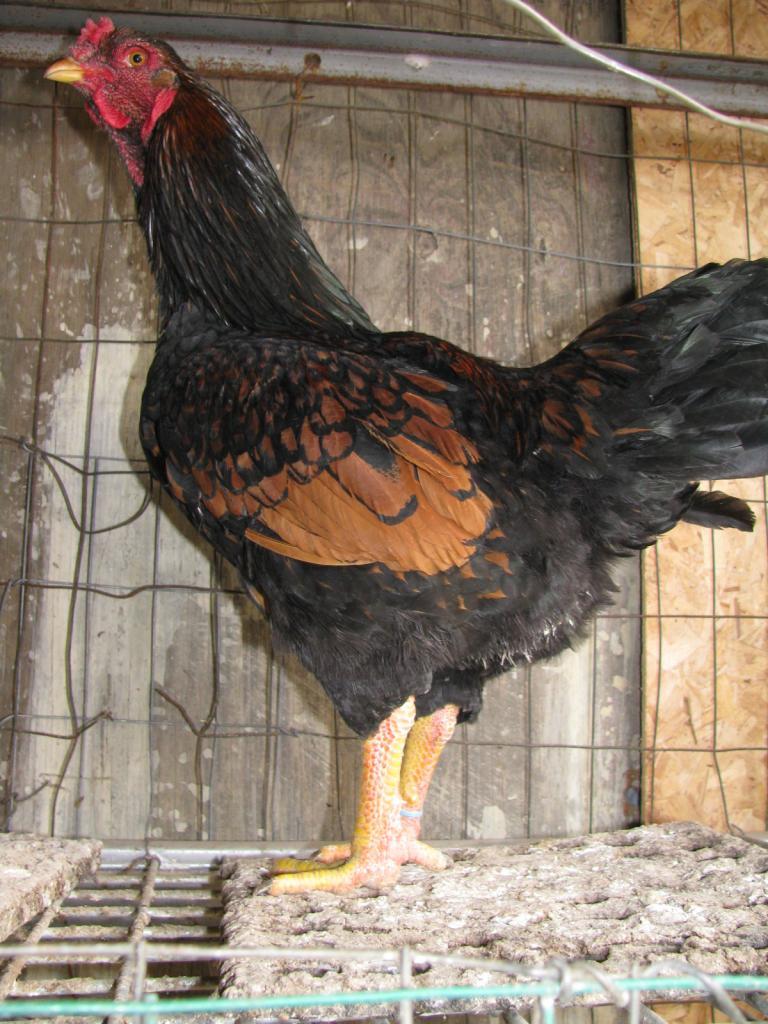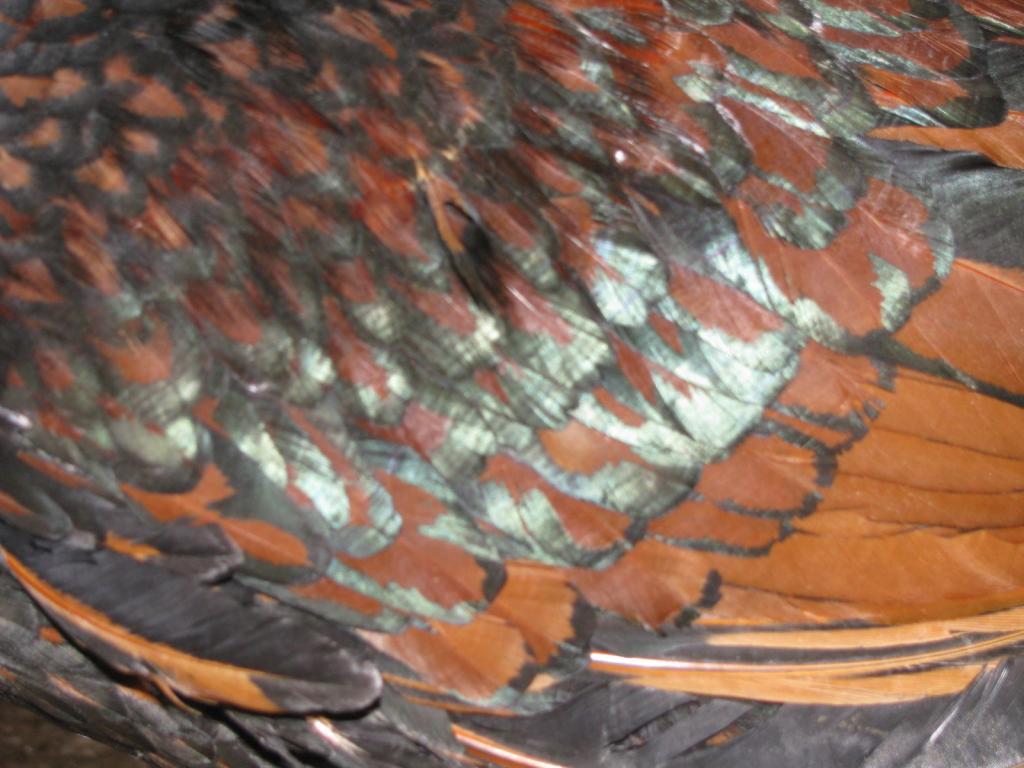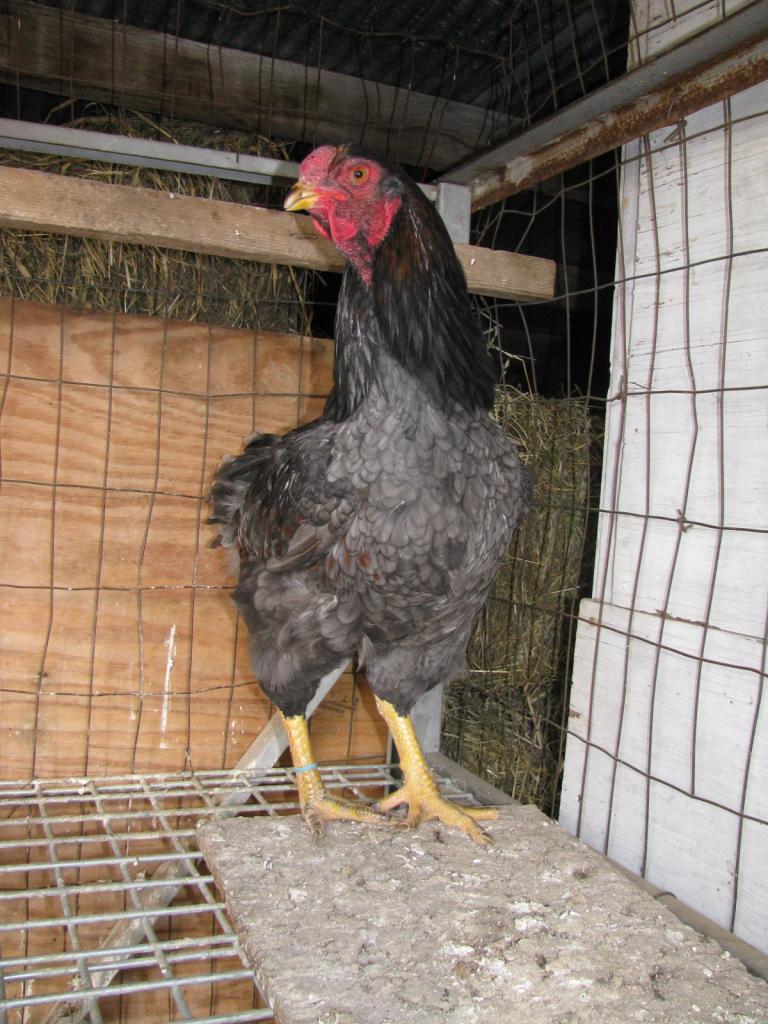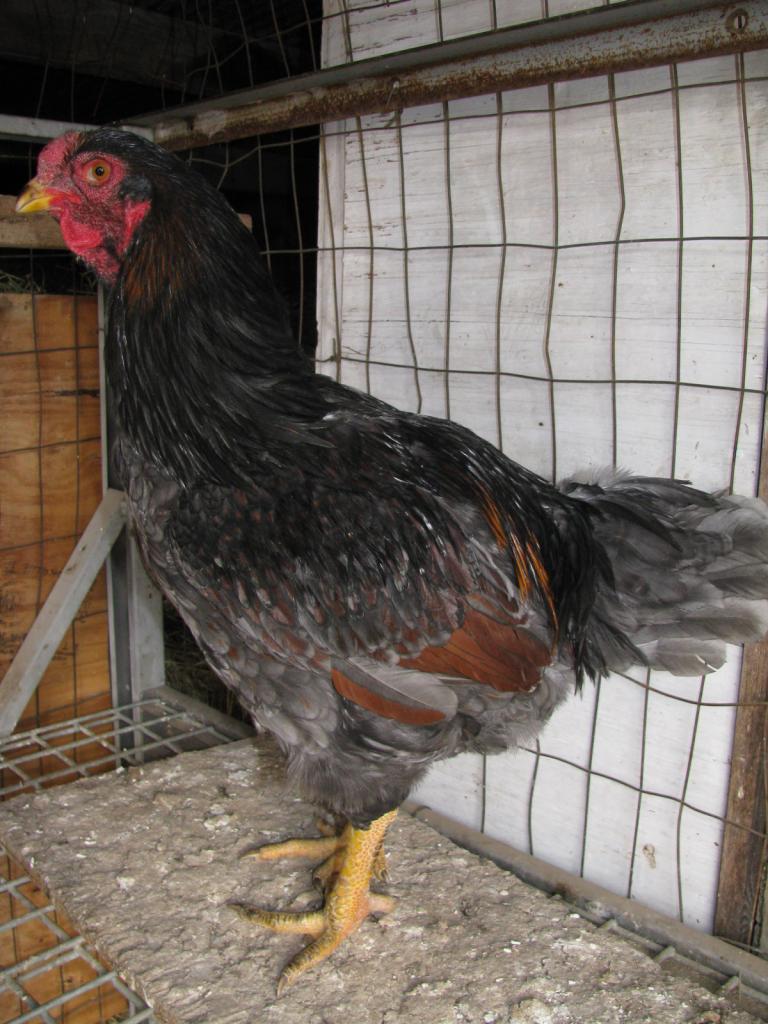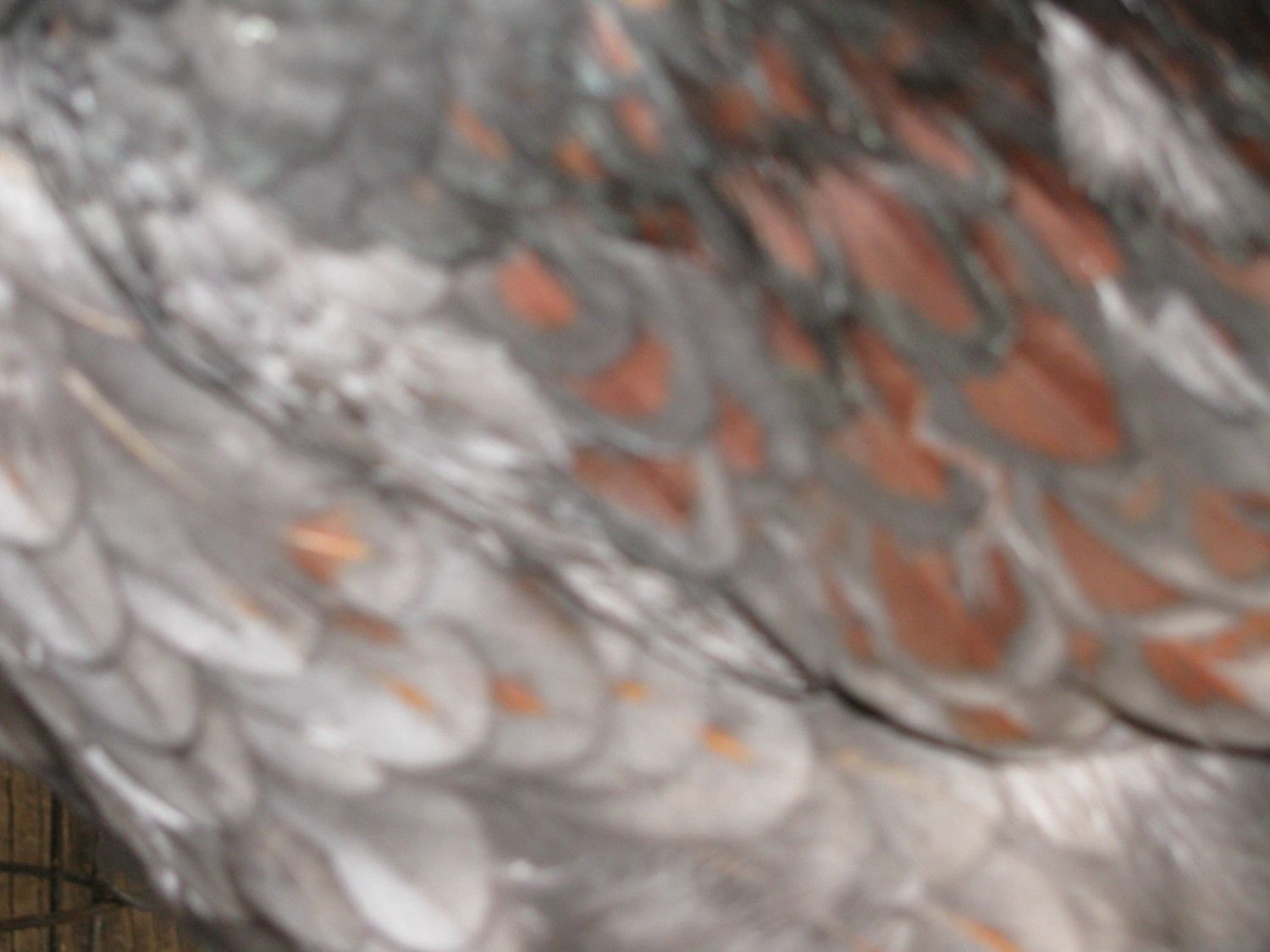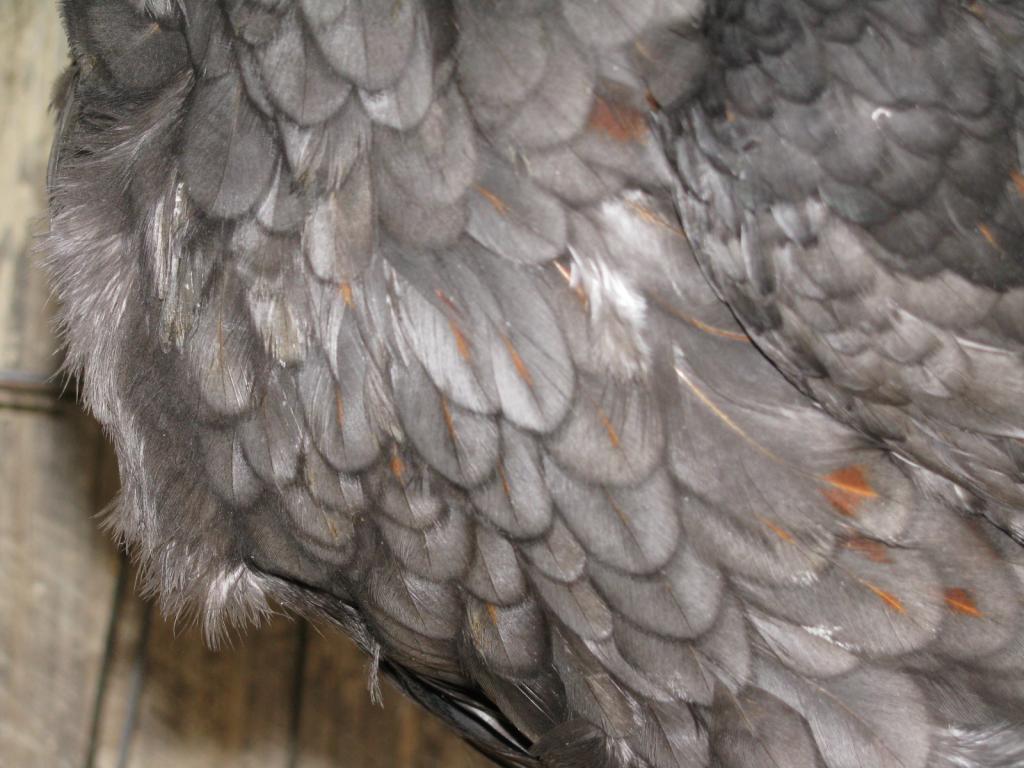Quote:
I had only one Cornsh X Ameraucana egg set when the buffalo gnats wiped me out. It was laid by smallest Black Ameraucana and hatched out a small but meaty black pullet. She's in the DC cockerals' breeding pen but all quit laying when I moved. The most promising birds were Ameraucana X CX. I'm trying to replace them with more crosses this year as all fell victim to that plague of blackflies. This was one at 13 weeks, with two adult hens behind him.

My predator losses have stopped, and I'm now on higher ground a mile away from the nearest flowing water; hopefully no heavy losses, if any, this year.
I had only one Cornsh X Ameraucana egg set when the buffalo gnats wiped me out. It was laid by smallest Black Ameraucana and hatched out a small but meaty black pullet. She's in the DC cockerals' breeding pen but all quit laying when I moved. The most promising birds were Ameraucana X CX. I'm trying to replace them with more crosses this year as all fell victim to that plague of blackflies. This was one at 13 weeks, with two adult hens behind him.
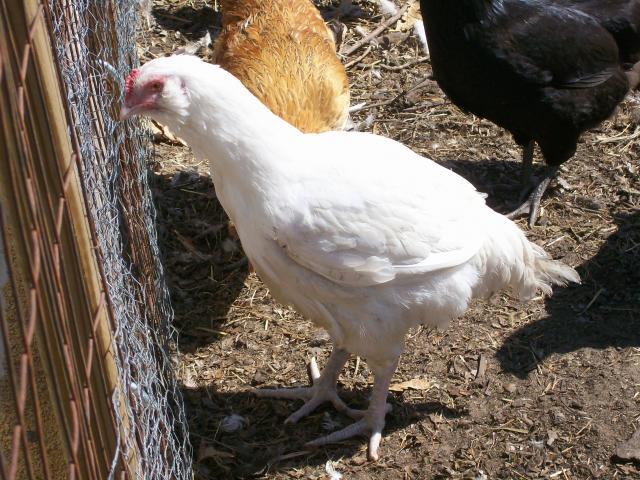
My predator losses have stopped, and I'm now on higher ground a mile away from the nearest flowing water; hopefully no heavy losses, if any, this year.


